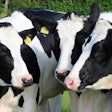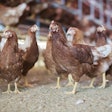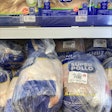
The world will be eating a lot more meat in 10 years’ time, particularly poultry. Poultry, as a share of total meat consumption, has been growing for decades, and by 2033, it is expected to account for 43% of meat consumed from all sources. Rising income levels are often cited as to why demand for poultry keeps rising, but there are numerous factors contributing to why this is happening
Agricultural Outlook 2024-2033, from the Organisation for Economic Co-operation and Development (OECD) and the Food and Agriculture Organization (FAO) forecasts that consumption of poultry meat globally will be 16% higher by 2033, the increase matched only by consumption of sheep meat. Global poultry meat consumption is projected to reach 160 million metric tons (MT) retail weight equivalent by 2033, accounting for half of the additional meat eaten over the period.
The reasons why poultry’s share of total meat consumption is growing are well known. Chief among them is that poultry meat is by far the lowest priced meat, but poultry also contains a healthier combination of protein and fat than other meats. While low cost may be the main driver in some markets, poultry’s healthier profile is more important in others.
These two factors, however, are not the whole story. Environmental considerations are also contributing towards the shift to poultry meat. Red meat production is more resource intensive and leads to higher greenhouse gas emissions, and poultry is, therefore, more attractive to sustainability/environment minded consumers.
The overall meat industry’s greenhouse gas emissions are predicted to rise by 6% to 2033 - much lower than the 12% growth in meat production. While part of this disparity is due to advances in productivity, meaning that more can be produced per animal, it is also due to the increased proportion of poultry in meat output.
Who’s eating more?
The increase in poultry meat consumption over the last decade was driven by rising consumption in Asia, particular in China, India, Indonesia and Vietnam. These trends are expected to continue, but consumption is also expected to grow in other regions too, including Brazil, Mexico, the European Union (E.U.) and the U.S.
Total meat consumption in most high-income countries, will continue to stagnate. Within this stagnation, however, type and quality will change. Within the E.U., for example, the outlook foresees an ongoing substitution for beef, pig and sheep meat by poultry meat.
While the outlook for poultry meat is certainly more positive than for other meats, not everything in the Outlook is positive.
For example, its authors note that growth in key meat markets remains relatively weak. China, for example, will remain the biggest single market for meat, but the pace of its economic recovery is still uncertain, and there are signs that the country will become less dependent on non-ruminant and poultry meat imports.
A shift in trade due to China is causing global meat exports to return to the lower levels seen in 2019. While trade will expand over the medium term, the pace of this increase will be moderate compared to the last decade, with the proportion of globally traded meat projected to rise back to 2021 levels by the end of the projection period. Global meat trade fell to 39 million MT in 2023.
Despite the strong outlook for poultry, there are factors that could cause difficulties the Outlook warns. Its authors argue that the rising density of production increases the risk of disease, and they note that while improving detection and treatment may make it easier to contain any outbreaks, costs still rise. The sector also faces environmental and health challenges, particularly where antibiotics and animal welfare are concerned.
Those issues to one side, most of which are also applicable to other protein types, it is also worth keeping in mind that while we will be eating more meat of all kinds over the years ahead, the rate of increase over the next 10 years will be below that recorded previous years. It will, however, be poultry that comes out on top, with other species simply being runners up.


















